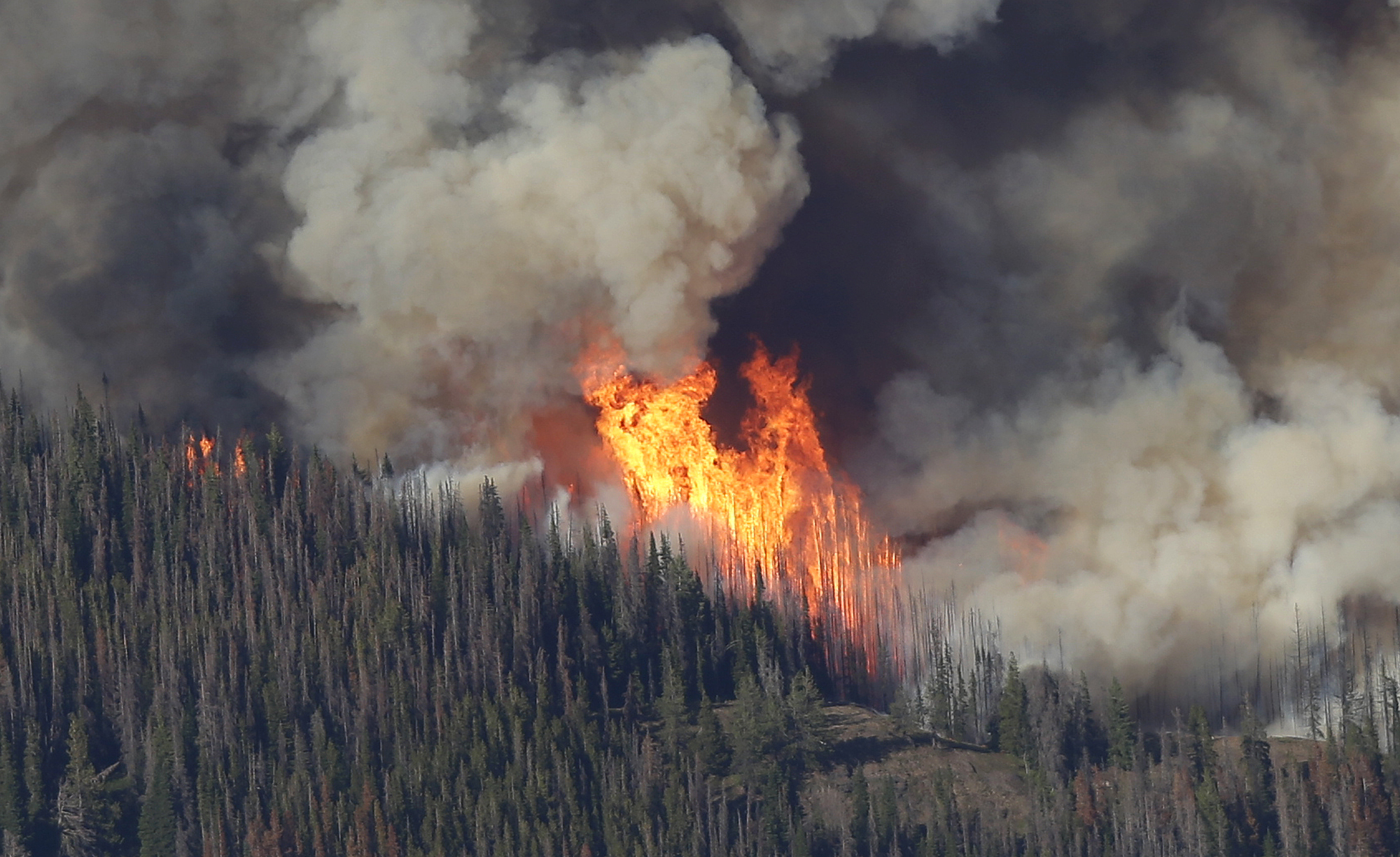
FILE: Flames burn trees in the Chiwaukum Creek Fire, as seen from the air, July 17, 2014, near Leavenworth, Wash.
Ted S. Warren / AP
It’s bone dry and blisteringly hot across Washington state, which means the chances of a spark growing to a large fire are higher this time of year.
These sweltering temperatures across Washington have dried out trees and cured grasses, priming them for potential fires.
This is the driest he’s remembered it in early July, said Matthew Dehr, the state wildland fire meteorologist.
“Oh man. We’re really at a critical juncture right now, and the rest of fire season doesn’t look like it’s going to let up,” Dehr said.
Those fire concerns extend to parts of the Olympic Peninsula, central Oregon and parts of north Idaho, which could have an increased chance of large wildfires this summer, according to an updated outlook from the National Interagency Fire Center.
June saw about the same amount of wildfires as normal. However, that could change for some parts of the Northwest as drought conditions continue across much of Washington and Idaho.
Starting this month, western Washington could see above normal significant fire potential, according to the fire center.
That hasn’t been helped by the recent heat wave, Dehr said.
While it’s getting a little cooler on the west side of the state, he said fire danger is still very, very high — especially for this time of year.
“We need rain to drop these fire danger indices any meaningful amount,” he said.
The critical fire conditions will likely stick around through August, Dehr said.
Part of that is because of a lingering drought, especially in the northern Olympic Peninsula, the central and northern Cascades and North Idaho.
This is the first year that Oregon won’t have drought declarations during the “heart of fire season” since 2017, according to the fire center. But some areas of central and northeastern Oregon are still abnormally dry.
Washington officials have moved firefighting resources to Kittitas, Yakima and Klickitat counties to prepare for any potential fires.
With fire crews already spread out across Alaska, Oregon and California, Dehr said Washington would have to compete for resources if a large fire ignites.
Washington is so dry that the Department of Natural Resources just issued a statewide burn ban. Dehr expects dry lightning and strong winds this weekend, which means there’s a greater need to prevent any human-caused spark.
About 90% of the wildfires that burn in the state are caused by humans, according to the state Department of Natural Resources. Human-caused fires increased in Washington and Oregon last year, according to the U.S. Forest Service.
That’s not only a problem for areas that butt up against wildlands, Dehr said. Everything is dry in cities, too.
“The chance of a fire going 1,000 acres in a neighborhood is not as high,” he said. “But if it goes 20 acres, there’s probably 20 to 30 homes that are affected by that.”
Homes and structures have been in danger in Washington’s Pioneer Fire, which started on June 8 near Lake Chelan.
The fire is burning in timber, brush and grass along steep slopes. Winds blowing across the lake have also made it difficult for crews to extinguish the fire, according to the website Inciweb.
The fire started on private land. Its cause is still under investigation.

